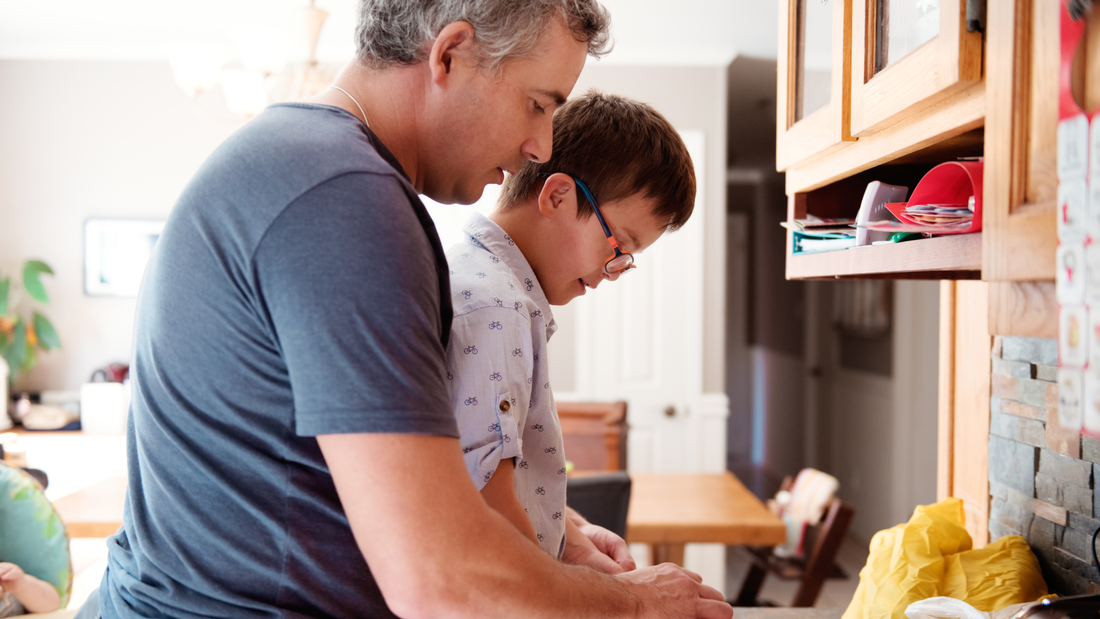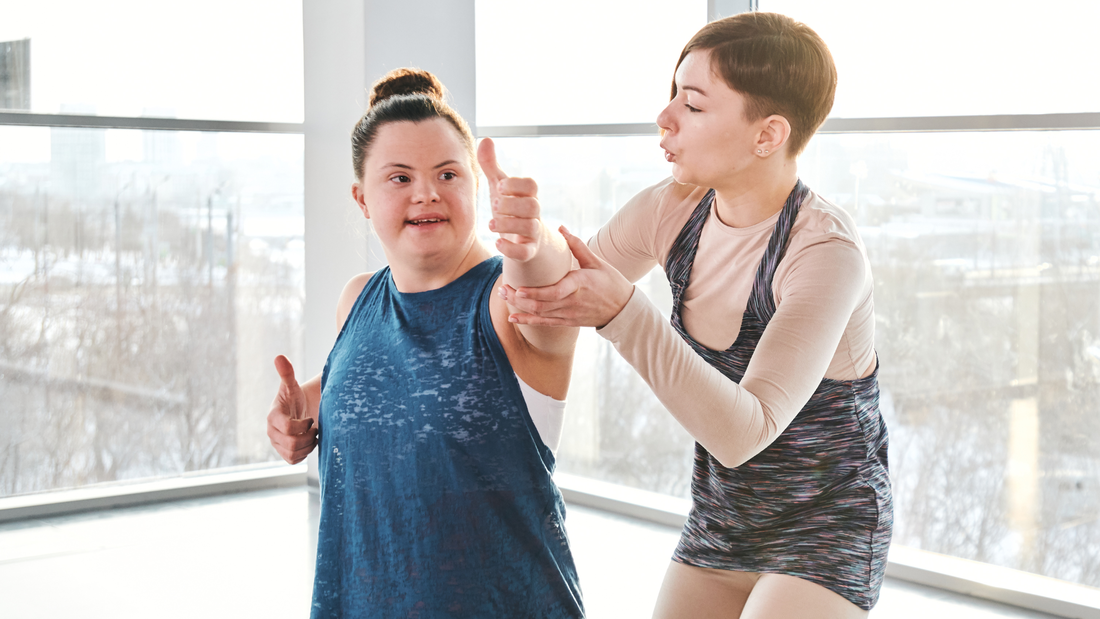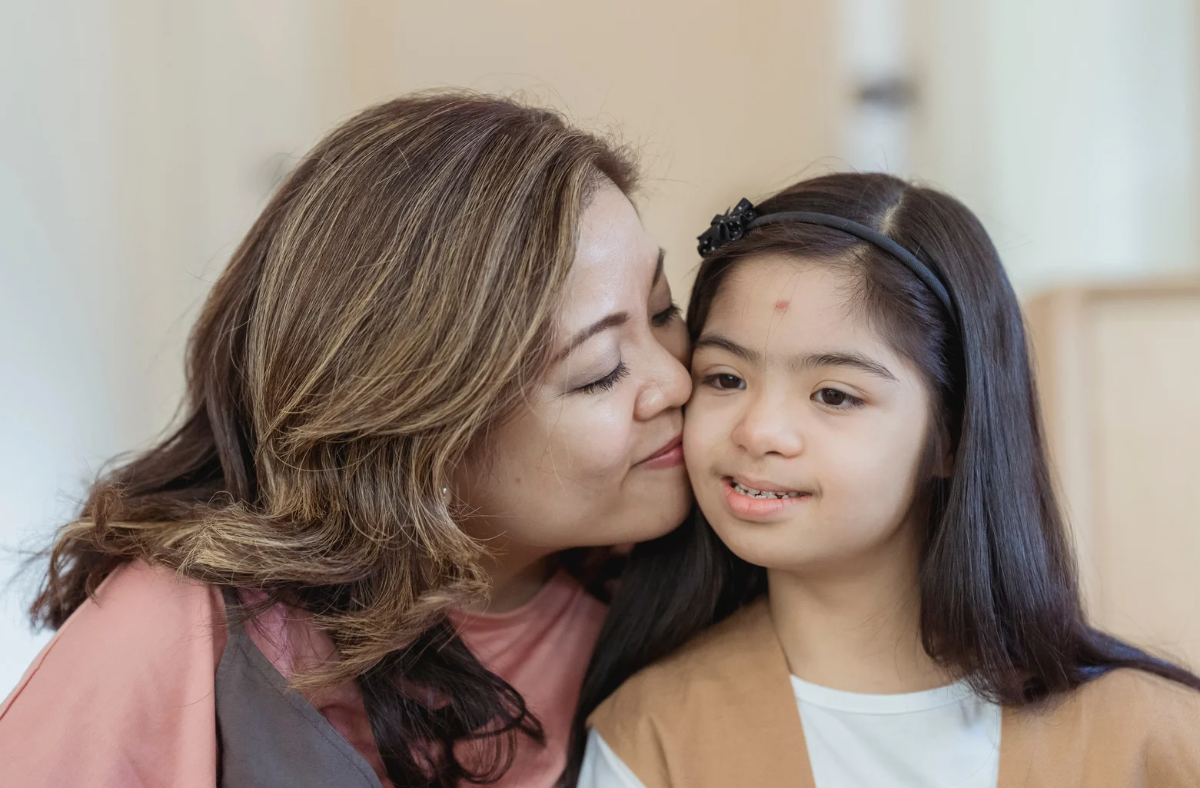|
When children with diverse abilities become adults, it can be challenging for them to prioritize interests that are stimulating and pleasant. But the truth is, everyone needs to participate in activities that bring them joy to foster improved mental and physical health. The good news is that there are plenty of fun activities for adults with disabilities.
Participating in activities outside of work or school presents an opportunity for differently-abled people to form strong social bonds with people that have similar interests and life experiences. And some activities also allow people with diverse abilities to fit some physical exercise into their daily routine. With fun daily activities, differently-abled people can feel a sense of accomplishment, boost their self-esteem, and improve their social skills — no matter their unique challenges. The Different Types of Disabilities When choosing fun activities for adults with disabilities, you must first take into account how their particular disability affects their lifestyle and capabilities. Generally speaking, disabilities can be classified into different categories based on the area of functioning they impact. While there are many types of disabilities, these are a few of the most common categories:
By recognizing an individual’s particular abilities and needs, you can make any necessary accommodations and find the right activities to enrich their lives. 5 Fun Activities for Adults with Disabilities People with disabilities can participate in the same activities as anyone else, especially when these activities are tailored to fit their needs. Just remember, if you or a loved one is interested in taking on a new physical activity, you’ll need to consult a healthcare provider to ensure that it’s safe to participate. 1. Join a Book Club Reading is a fun way for differently-abled people to connect with others through the medium of literature, so why not try joining a book club? Book clubs allow people with intellectual disabilities to hone their reading and comprehension skills. Meanwhile, people with physical disabilities can engage with others on an intellectual level. Joining a book club is also a great way for people with autism to develop their social skills while learning more about their special interests. As with most activities for adults with disabilities, book clubs typically offer adaptations for people that don’t read print, which might include braille, using screen readers, or having someone read for them. With the right tools, everyone can participate in a communal book club experience! 2. Try an Adaptive Cooking or Baking Class Creating delicious dishes in the kitchen is loads of fun for everyone! Making something out of nothing instills a sense of pride and accomplishment in differently-abled people. And to sweeten the deal, they’ll get to enjoy new foods they may not have considered before. Cooking classes show that activities for adults with disabilities can be practical, as well. Whipping up a meal in the kitchen presents an opportunity for people with disabilities to learn critical life skills, like measuring ingredients and following instructions. And of course, people with disabilities can connect with like-minded individuals while they learn how to prepare a flavorful meal! 3. Take an Adaptive Yoga Class Some people think that only the ultra-flexible can take a yoga class, but this simply isn’t true! In the realm of activities for adults with disabilities, yoga is often overlooked, because some people believe that they aren’t flexible or strong enough to participate. However, anybody can try their hand at yoga, especially if it’s an adaptive yoga class. Adaptive yoga is a type of yoga made for differently-abled people that includes multiple variations of classic yoga poses. Since adaptive yoga classes are more individualized than traditional yoga classes, the classes are smaller to ensure that the instructors can focus on each person’s unique needs. 4. Take an Adaptive Fitness Class When it comes to activities for adults with disabilities, an adaptive fitness class is an experience they won’t want to miss. Adaptive fitness classes are similar to any other fitness class, except that the instructors create new versions of classic exercises so that differently-abled people can get moving, too. Most adaptive fitness classes accommodate multiple people at once, so it’s a great way to make friends and work out at the same time. Even if someone is managing a physical or mental disability, adaptive fitness specialists have the skills necessary to ensure that all their students get their blood pumping! There are plenty of ways for adaptive fitness specialists to spark physical activity, so whether it’s through low-impact cardio or strength training, they’ll know how to meet each student’s fitness needs. 5. Get in the Groove and Try Dancing Listening to music while dancing is a great way for differently-abled people to have fun and express themselves. And the best part is, they can do it alone or with friends. Dancing allows people that have trouble communicating with language to benefit from having a new outlet for their emotions while they get their daily hour of physical activity. The powerful combination of music and dance can create a transcendent experience that allows differently-abled people to communicate their deepest feelings without speaking a word. Also, many dance studios offer classes specifically for people with disabilities. When instructors create adaptive dance routines, everyone can participate in the fun! Get Moving and Make Friends with Let's Go Fitness If you’re looking for a special needs fitness program but you’re not sure where to start, our team at Let’s Go Fitness is here to help. We provide special needs fitness programs for differently-abled individuals. At Let's Go Fitness, we strive to create a welcoming environment where anyone can make friends, get in shape, and have fun doing it! Our adaptive fitness specialists guide participants every step of the way. Whether our athletes need accommodations, modifications, or simply an understanding listener, we'll help everyone reach their goals. Are you ready to start a fitness journey for yourself or a loved one? Contact Let's Go Fitness today to learn more about our membership packages!
1 Comment
It can seem like the fitness industry often celebrates one body type, which is thin, cis-gendered, "able-bodied," and strong in all the right places. Consequently, anyone who doesn't fit this mold may feel forgotten and discouraged from beginning their fitness journey.
The truth is anyone can get in shape and become the fittest version of themselves — even people with diverse abilities. With a supportive community and the expertise of adaptive fitness specialists, athletes with diverse abilities can get active and lead healthier lifestyles. Empowering athletes with diverse abilities strengthens the community and creates an environment where everyone feels valued just as they are. Let's get started by learning more about what it means to have diverse abilities and the benefits of a specialized, understanding fitness community. What Are Diverse Abilities? The term "diverse abilities" means that everyone has unique abilities, and all of them have intrinsic value. This is a relatively new phrase when referring to people with special needs, but changing the language we use to speak about people with "disabilities" creates a more welcoming, inclusive environment for everyone. The American Community Survey (ACS) uses six basic categories when defining people with diverse abilities, including the following:
By raising awareness about diverse abilities, we can create a society that is more accessible to all. Recognizing and respecting that there are different ways of navigating the world gives people with diverse abilities the opportunity to reach their full potential. Physical Training with Diverse Abilities Most people with diverse abilities focus on enhancing cognitive skills through additional school tutoring or work accommodations. However, physical training and exercise are just as crucial for those with diverse abilities as for everyone else. Physical activity is proven to increase self-esteem in those with diverse abilities while providing a necessary social outlet. Most people know that regular exercise has myriad benefits for a person's physical and mental health, but this is especially true for those with diverse abilities. Research states that adaptive fitness dramatically improves the overall well-being of individuals with diverse abilities and provides them with a sense of purpose and a safe environment for social interaction. How to Incorporate Adaptive Fitness in an Exercise Regimen In the simplest terms, adaptive fitness is personal training for people with diverse abilities. These workouts may include strength training, cardio, and pilates, just like any other exercise regime. With these tips, every athlete can get a well-rounded workout catered to their abilities. Feature Low Impact Exercises Some people with diverse abilities have ambulatory conditions, meaning that high-impact exercises such as running or jumping rope can cause injury. But these exercises can be modified to avoid injury. For example, instead of doing jumping jacks, diversely abled athletes can remove the jumping and do a half jack with arm movements. Athletes who are wheelchair-bound or have other ambulation conditions may need to perform entirely different exercises. In this instance, consider handcycling and other seated aerobics exercises. Try Exercises Made to Fit Each Athlete’s Abilities Athletes with motor imbalances can accommodate these physical challenges by performing exercises that are made especially for them. For instance, people with autism benefit from adaptive fitness exercises like bear crawls, which allow them to improve cue recognition and coordination simultaneously. Anyone can build a stronger body and become the athlete they always wanted to be with the right activities, modifications, and accommodations. Use Resources and Connect with Others When it comes to adaptive fitness, it's essential to use all available resources and form a community with people that also have diverse abilities. There's no better feeling than working out with friends, and research supports the assertion that exercising in a group can supercharge an athlete’s motivation. Additionally, people with diverse abilities often leave the world feeling excluded and underrepresented. Working with similar people creates a safe environment where they can achieve their fitness goals without judgment. Since very few gyms cater to those with diverse abilities, these athletes should consider joining an online fitness community like Let's Go Fitness, where they can fit in with people just like them! Who Can Benefit from Let's Go Fitness? Getting in shape is all about fun, friends, and fitness. At Let's Go Fitness, we ensure that people with diverse abilities have the resources to lead a healthier lifestyle and have fun doing it. Our fitness community celebrates diverse abilities. While we work with all people, most of our athletes have the following conditions:
If you or a loved one needs help accommodating any other disabilities, we're happy to help! Just let us know so we can develop a regimen to bring out the best in your diverse abilities. What to Expect When You Join Interested in joining our supportive community? In the first phase of your fitness journey, you'll work out individually with our adaptive fitness specialists to master the basics, like proper form and safety. In the second phase, you'll form social connections with other athletes with diverse abilities. Once you have a solid foundation and are comfortable working out in a group, you'll move on to the Fitness phase, where you can focus on improving your athletic abilities with support from your new friends! Make the Most of Your Diverse Abilities with Let's Go Fitness! At Let's Go Fitness, we strive to create a welcoming environment where you can make friends, get in shape, and have fun doing it! Our adaptive fitness specialists will guide you every step of the way. Whether you need accommodations, modifications, or simply an understanding listener, we'll help you reach your goals. Are you ready to start your fitness journey? Contact Let's Go Fitness today to learn more about our membership packages! The way that every person exercises, trains, or learns is different from another. In fact, every individual has different abilities that give us the capability to function in various settings. However, it’s become increasingly important to recognize and help involve children and young adults with disabilities. Maintaining and developing physical activities for children with disabilities are important first steps in helping differently-abled athletes develop social bonds and community skills.
Understanding Diverse Abilities 61 million adults in the United States live with a disability, with almost 15% of the population aged 5 or older reporting some type of disability. Although diverse abilities in the past have been viewed as a deterrent to new experiences, diverse abilities can actually be a connection point for many differently-abled individuals. Children with disabilities may have specific triggers or need special accommodations. However, all children can benefit from building sustainable connections and learning to express themselves through functional communication. One of the most significant methods that children can use to build a foundational base of functional communication is through physical activity. Benefits of Physical Activity Children with special needs are nearly twice as likely as other children to be overweight or obese, often due to the greater chance of being sedentary. Many times, children and young adults with special needs are overlooked or excluded when physical activities at traditional schools are planned or implemented. This exclusion is usually unintentional. However, it significantly limits the experiences of children, limiting physical developmental opportunities as well as social ones. The truth is that there are significant benefits when it comes to exercising for children with disabilities. While it’s clear that physical improvements are a benefit of exercise, the self-esteem of children with disabilities, as well as a reduction in maladaptive behaviors. Maladaptive behaviors interfere with a child’s ability to participate in particular settings, adapt to new or difficult circumstances, or complete daily activities. Physical activity can be a great way to get your child past certain maladaptive limitations. Physical activity can also:
Obstacles Athletes with Disabilities Face If it’s true that physical activity can improve so much for a child with special needs, you may be asking why more parents aren’t using physical activity as an outlet for athletes. In truth, parents of those with diverse abilities already face multiple challenges, including financial hardship, maintaining their child’s appointments, or managing the responsibility of additional children. Often, there are no options at schools or after school programs for an athlete with disabilities to get out and get involved. In traditional programs, athletes with disabilities are regularly overlooked even if they want to participate. For many schools or group homes, getting children with diverse abilities involved while making accommodations is simply too much to handle. Often, there are multiple barriers that hinder the involvement of a child with special needs. As described by the World Health Organization, barriers are described as “Factors in a person’s environment that, through their absence or presence, limit functioning and create disability. These include aspects such as:
There are seven common barriers that an athlete with special needs may face, including attitudinal, communication, physical, policy, programmatic, social, and transportation. Here, we’ll explore the three most common types. Three Common Types of Special Needs Barriers Attitudinal barriers Attitudinal barriers are the most common types of barriers people with special needs face. Even though our society has evolved dramatically in its understanding of diverse abilities over the last few decades, there are still stereotypes and misconceptions about those who have special needs permeating throughout much of society. By not defining special needs as a limitation that divides and instead accepting it as a social responsibility to accommodate those with diverse abilities, more people can be supported to live fulfilling lives. Often, it's not that people with diverse needs don’t want to be involved. Instead, individuals without barriers have already made the decisions for them. Communication Barriers Communication barriers for a person with a disability involve anything that impacts reading, writing, hearing, speaking, and understanding. These barriers could include videos without captioning, one font for the text, or even the use of technical language when communicating. In physical activities, participants often have to follow standard communication for a class. However, individuals with diverse abilities may need more accommodations to fully participate in a lesson or game. In traditional settings, this can leave special needs athletes missing out on the fun of social bonding. Physical barriers Physical barriers are objects that prevent or block mobility or access. Whether it is steps a person in a wheelchair can’t use or a piece of equipment that doesn’t accommodate an individual with diverse abilities, physical barriers commonly prevent full participation in an activity. Accommodating the Athlete: Specialized Exercise The truth is athletes with special needs want to be involved just like any other athlete. By taking an individualized approach through accommodations, modifications, or simply listening, you can get your child involved in an exercise program that will help them have fun, make friends, and get in better shape. Although you can use adaptive fitness exercises to get your child exercising, finding a community will help them build a foundation for life-long health and wellness. At Let’s Go Fitness, we start our athletes one-on-one with our instructors, teaching them how to have fun and understand basic exercises, and then we build on that foundation of specialized exercise. Next, athletes graduate to small group exercises, where they make new connections while exposed to new exercises. Following the foundation of friendships and new exercises, athletes can graduate to their fitness level, where they keep increasing their fitness while working out with larger groups. At LGF, we overcome barriers together. By understanding the diverse abilities of our athletes, we have been able to create a passionate community that our athletes are proud to call home. By getting involved in LGF, your child will have the opportunity to find others with diverse abilities, and you’ll be responsible for opening the door to new possibilities. |
ABOUTLet's Go Fitness's blog page keeps you up to date with educational and instructional information for training with diverse abilities. Archives
June 2023
Categories |
Let's Go Fitness
© 2020 Let's Go Fitness is an online fitness platform for people of all abilities.




 RSS Feed
RSS Feed